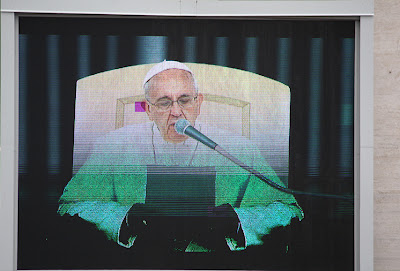As a convenience to those who were with us on the Holy
Apostles Year of Faith Pilgrimage, here are the links to all my travel blogs listed in
itinerary order.
I will eventually move on to other topics, so if you want to direct people to my blogs on Turkey and Rome please send them to this Pilgrimage Blogs Link Page. Simply copy and paste the following URL into your site dashboard or web-builder, or insert it into your email. It will link directly to this page. Thanks!
http://ken-canedo.blogspot.com/2013/10/pilgrimage-blogs-link-page.html
I will eventually move on to other topics, so if you want to direct people to my blogs on Turkey and Rome please send them to this Pilgrimage Blogs Link Page. Simply copy and paste the following URL into your site dashboard or web-builder, or insert it into your email. It will link directly to this page. Thanks!
http://ken-canedo.blogspot.com/2013/10/pilgrimage-blogs-link-page.html
Monday 30 September 2013
Our basic itinerary, which got changed a few times as the days unfolded.
Tuesday 1 October 2013
The name of our hotel was . . . Titanic? Really?
Wednesday 2 October 2013
Mass at the Cathedral of the Holy Spirit
Hagia Sophia
The Blue Mosque
Topkapi Palace
Hagia Sophia
The Blue Mosque
Topkapi Palace
Thursday 3 October 2013
Mass at the Basilica of St. Anthony of Padua
Church of the Holy Savior in Chora
The Grand Bazaar
Cruising the Bosphorus
Church of the Holy Savior in Chora
The Grand Bazaar
Cruising the Bosphorus
Friday 4 October 2013
Roman Ruins
Basilica of St. John the Apostle
House of the Virgin Mary
Basilica of St. John the Apostle
House of the Virgin Mary
Saturday 5 October 2013
Orphan Mosque at Iznik
Sunday 6 October 2013
Praying at the Tomb of St. Paul
Monday 7 October 2013
Rome by Night
Papal Basilica of St. Mary Major
Church of the Gesu
Basilica of St. Clement
Colosseum
Scala Sancta
Papal Archbasilica of St. John Lateran
Papal Basilica of St. Mary Major
Church of the Gesu
Basilica of St. Clement
Colosseum
Scala Sancta
Papal Archbasilica of St. John Lateran
Tuesday 8 October 2013
Our moving liturgy with Fr. Paul at the Cathedra Petri altar.
Plus, the fun story of how Ken got away with playing guitar at St. Peter's!
Plus, the fun story of how Ken got away with playing guitar at St. Peter's!
Tuesday 8 October 2013
Our memorable day at these two iconic sites.
Wednesday 9 October 2013
A day that will live in our hearts forever!
Thursday 10 October 2013
Our journey through "Miracle Country"
Santuario del Miracolo Eucaristico
Shrine of St. Pio of Pietrelcina (Padre Pio)
Santuario del Miracolo Eucaristico
Shrine of St. Pio of Pietrelcina (Padre Pio)
Friday 11 October 2013
Going out in style at Le Terme del Colosseo
(includes supper video)
(includes supper video)























































